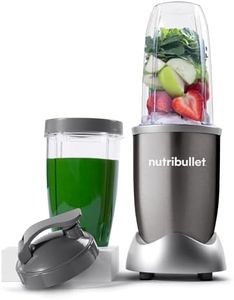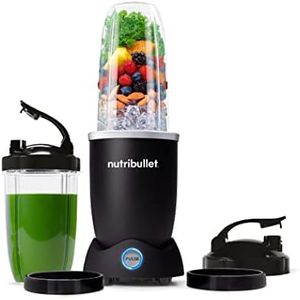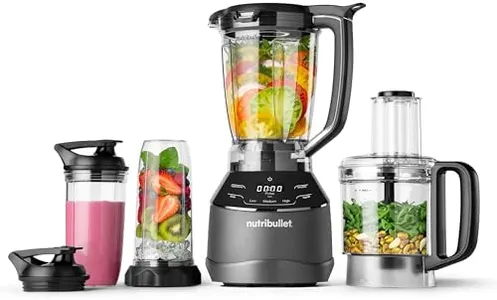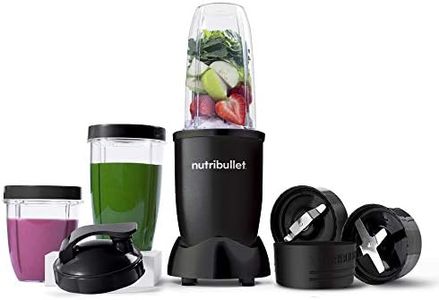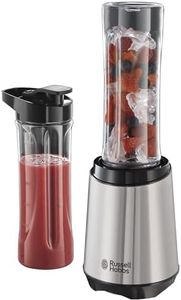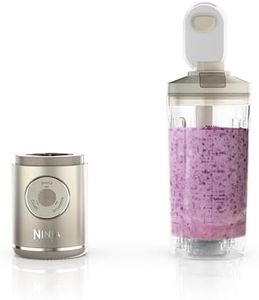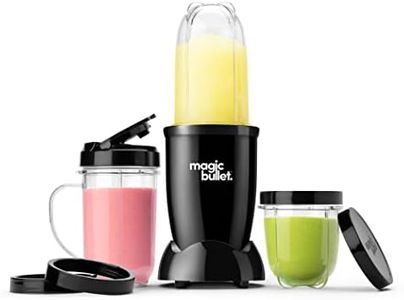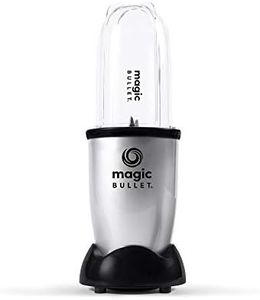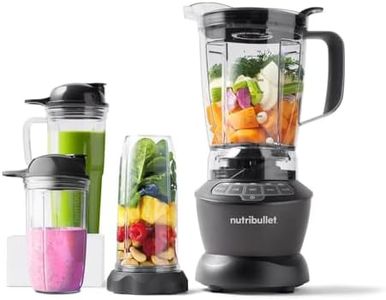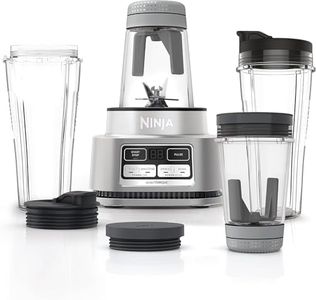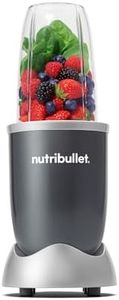We Use CookiesWe use cookies to enhance the security, performance,
functionality and for analytical and promotional activities. By continuing to browse this site you
are agreeing to our privacy policy
10 Best Personal Blenders
From leading brands and best sellers available on the web.By clicking on a link to a third party's website, log data is shared with that third party.
Buying Guide for the Best Personal Blenders
Personal blenders are great for making smoothies, shakes, or small portions of sauces directly into a cup that you can take on the go. When choosing a personal blender, it’s important to focus on the features that match your daily routine and the types of foods or drinks you want to prepare. Think about how often you will use it, what types of recipes you plan to make, and how much counter or storage space is available in your kitchen. Understanding the main specifications allows you to find a blender that fits seamlessly into your lifestyle, making healthy eating or food prep quick and convenient.Motor Power (Watts)Motor power tells you how strong the blender’s engine is and affects its ability to crush and blend ingredients smoothly. Lower motor power (around 200-350 watts) handles softer ingredients like bananas or yogurt but may struggle with frozen fruit or ice. Medium power (350-600 watts) is suitable for most smoothies, soft ice, or leafy greens. High power (above 600 watts) can handle tough tasks like crushing ice, nuts, and frozen fruit quickly and smoothly. Choose a power level based on what you blend most often: lighter use for simple mixes, and higher power if you want versatility and smoother results with harder ingredients.
Cup CapacityCup capacity refers to how much liquid or food the cup can hold at once. Smaller sizes (10-16 ounces) are handy for single servings, travel, or if you prefer to make a fresh blend each time. Medium cups (16-24 ounces) give you a bit more room and are good for meal replacements or larger drinks. Bigger cups (over 24 ounces) are great if you want to split a drink between two people or prep larger batches. Pick a size that matches how much you plan to make in one go; if you’re always on the move, a smaller, more portable cup might be best, while for meal-sized or shared smoothies, a larger cup is more practical.
Blade DesignBlades are what actually chop and mix your food, and their design impacts how smooth and consistent your blends turn out. Basic flat blades work well for simple soft foods, while multi-tier or cross blades are better at pulling down and blending tougher ingredients like frozen fruit, ice, or fibrous vegetables. If you like silky, well-mixed results or want to make more than just smoothies (like dips, nut butters, or sauces), look for more complex blade shapes. Consider your typical recipes to decide whether basic or advanced blades serve your needs better.
Ease of CleaningBeing able to clean your blender easily can make a big difference in how often you use it. Some blenders have dishwasher-safe parts, while others require hand-washing. Removable blades and simple designs are easier to rinse clean quickly after use. If you’re short on time or plan to blend sticky or thick mixtures, look for a blender that is specifically labeled as easy to clean. The easier it is, the more likely you’ll enjoy using your blender every day without hassle.
Portability and StoragePortability covers how convenient it is to take your blended drink with you, and storage is about how much space the blender occupies on your countertop or in a cabinet. Some personal blenders feature travel lids or cups that double as a bottle, which is handy if you like taking your drink on the road. Compact designs are also easier to store and move around, while bulkier ones with lots of accessories may take up more space. Consider whether you need to travel, commute, or have limited kitchen room to help guide your choice.
